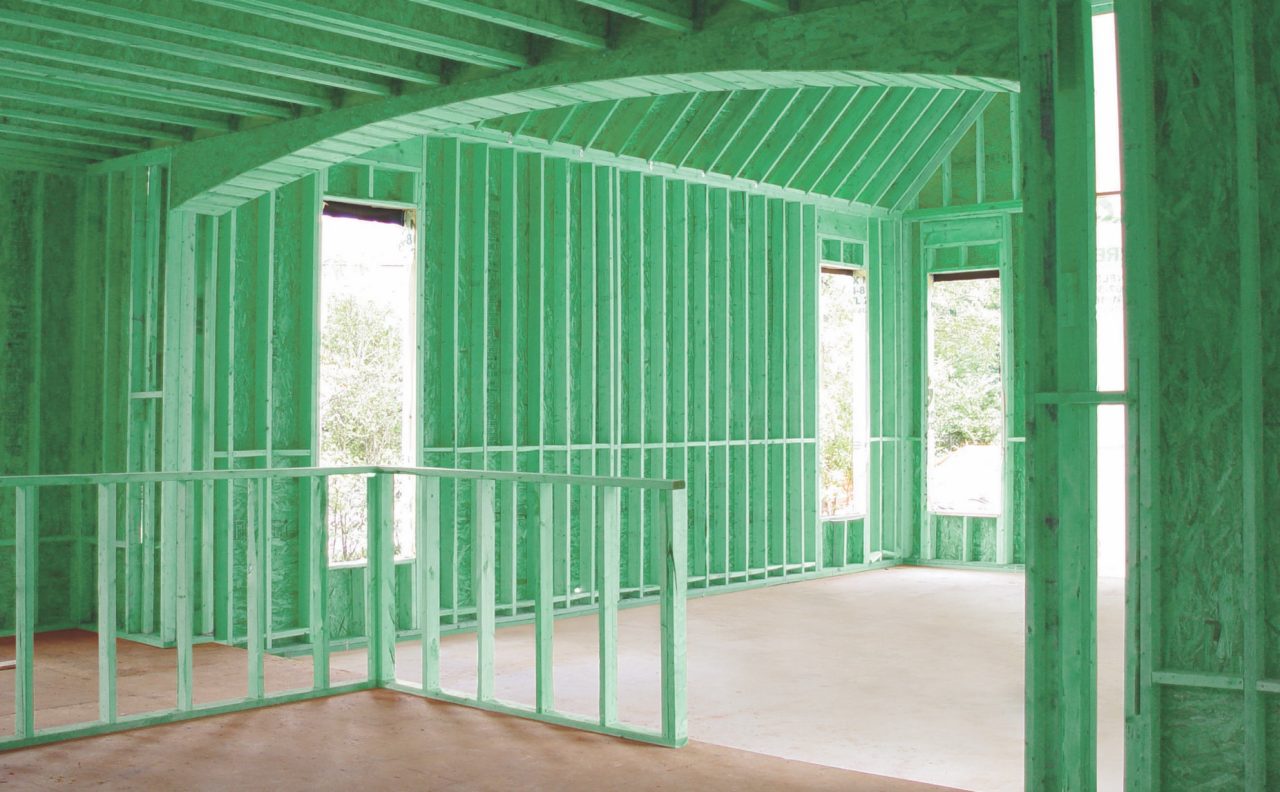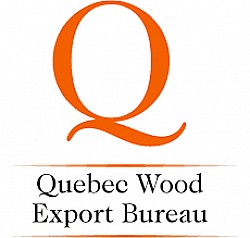09-17-2025

Learning Objectives
1. How to prequalify a wood treatment by reviewing its performance in the rigorous US fire testing pipeline that evaluates and certifies all FRTW options.
2. How to identify impregnation treatments vs surface treatments and coatings, by studying the product’s acceptance criteria, testing, accreditation, and evaluation.
3. Learn about how single-ingredient mineral salts like sodium borate can span both FRTW and insect resistance. Studying the IRTW (insect resistant treated wood) standards can help the specifier to establish simple best practices that work across use categories, climate zones, and applications.
4. Learn to identify environmental rating systems that can reward wood treatments with low human and eco-toxicity profiles, and use a mineral salt treatment’s first-inclass Environmental Product Declaration(EPD) to quantify its low embodied carbon footprint in comparison to other structural options like light-gauge steel.
Comments
Excellent
DavidVery informative
JerryI've never read about this type of treatment before
susanGOOD COURSE
MATTHEWExcellent.
AlejandroA lot of information packed into one hour
SallyVery educational
Ryangood information more technical than I expected
Terrygreat
YingyingExcellent coverage of the material. Learned a lot about the various coatings and uses.
JohnGood presentation! There are many abbreviated terms - I had to stay focused.
IvankaVery informative
Ramona Venerainteresting
JDIt was a very tough course but very very directive provided. thank you
FarhadVery Informative
AlanGreat overview of FRTW and IRTW wood treatments, their evaluations and different uses. Learned about Sodium Borate treatment of wood for insect protection, not a treatment I had heard of in the passed.
John DThank you for providing an information dense one hour seminar on Sodium Borate Treatment Technologies, new information that I can use now and in the future.
WilliamVery interesting
WilliamVery interesting presentation that gives a clear description of an extremely complicated subject.
TracyHelpful.
KellyThis is a very good course to study
AdeliaGood overview.
DavidVery insightful
BojanaGreat content throughout the course.
Johngood
NormanI enjoyed learning about FRTW and IRTW preservation.
KevinDefinitely an emerging topic that is deserved of much more attention and exploration.
LionelInformative
AndrewInteresting new things in development
SpencerVery technical, but informative.
ThomasThere was a lot of jargon that was confusing to me, but in general the info of this class was comprehensible and useable for me.
Wesleygood job
ThomasThorough and knowledgeable presentation of materials and processes unfamiliar to this architect. Curious to more about the methods available.
JoeInformative
ConnieVery informative
LorettaVery informative
Lorettagood
HabibGood presentation
R. Scottgood job!
Michaelgood
PeterGreat Course
ScottExcellent course 👍
JohnNice refresher of pertinent information.
ChristopherVERY GOOD
KennethGood information
JossephLots of depth of information but done very well.
DuaneGreat!
Matsongood course
RobertGood
SlobodanExcellent Presentation of technology all Architects will eventually be involved with as clients become enlightened to the benefits of wood in design
douglasvery interesting seminar - it's a complicated subject
Richardgood info to have at hand will be specifying wood
RonINFORMATIVE
DALLASInformative course
Lloydgood class
PedroGreat Seminar
AlbertGreat Course
V RandallVery good
markgood course
NicholasVery informative, good information Thank you
AxelWell detailed and informative
KelleeVery informative
EliasGreat Presentation
NathanGood presentation, more residential reference would be great
CraigGreat topic!
Francisconew info!
KateVery informative presentation.
CamiloGreat
AdamGood information, I was overloaded with the amount of information in presentation.
MarkTruly informational
ToddA lot of info, thanks
CharlesInformative
AfsanehBuen curso para refrescar conocimientos. Poco ameno.
JulioExcellent topic. thanks
DAVOUDGood Course
OttoA new topic for me, as I do not practice in a termite zone. Very knowledgeable presenter, I learned a lot.
JanetVery informative !
Sarahinformative
JamesInformative
KeltieGood course with detailed presentation
RohitGood Info.
RogerInformative.
MarcoThe presenter was very knowledgeable and good looking, too!
LaurieSalty Timbers : A guide to sodium borate treatment technologies in the FRTW, IRTW, and wood structure preservation fields
FREE
An architect’s perspective on wood preservation treatment technologies is needed to balance the considerations of building durability while protecting the health and welfare of building occupants. This course uses case studies in single ingredient mineral salt treatments, whose known origin and chemistry can lower the impact of construction material supply chains. FRTW (Fire Resistant Treated Wood) is regulated by certifications in the US, with specific applications in mid-rise, multi-family, and mixed-use projects. Specifiers who want to access the environmental and structural benefits of a sustainable natural resource by using FRTW, have to navigate a complex web of factors including chemistry, effects on fasteners, and regulations that have evolved to ensure safety and code compliance in critical structural components. IRTW (Insect Resistant Treated Wood) is a standards-based regulatory framework with a wide variety of treatment intensities, use classifications, and chemical ingredients. The southern US and Caribbean basin offer study of multiple environmental conditions and code frameworks. Mineral salt treatments are unique in their ability to span both of these markets with a single ingredient. Although sodium borate’s low human and eco-toxicity has been know for centuries, the modern potential of mineral salt treatments for wood are shown most clearly by recent technologies that have been able to clear the hurdles of US certification and patent processes.
Credits: 1 AIA HSW + 1 AIBD Primary + 1 AIBC Core LU + 1 AAA Structured LU + 1 OAA, OAQ, SAA, MAA, AAPEI, NWTAA
Length: 1h
You must be logged in to take a course. Please login or create an account here
Login OR Create an account ShareSponsored by


Salty Timbers : A guide to sodium borate treatment technologies in the FRTW, IRTW, and wood structure preservation fields
FREE
An architect’s perspective on wood preservation treatment technologies is needed to balance the considerations of building durability while protecting the health and welfare of building occupants. This course uses case studies in single ingredient mineral salt treatments, whose known origin and chemistry can lower the impact of construction material supply chains. FRTW (Fire Resistant Treated Wood) is regulated by certifications in the US, with specific applications in mid-rise, multi-family, and mixed-use projects. Specifiers who want to access the environmental and structural benefits of a sustainable natural resource by using FRTW, have to navigate a complex web of factors including chemistry, effects on fasteners, and regulations that have evolved to ensure safety and code compliance in critical structural components. IRTW (Insect Resistant Treated Wood) is a standards-based regulatory framework with a wide variety of treatment intensities, use classifications, and chemical ingredients. The southern US and Caribbean basin offer study of multiple environmental conditions and code frameworks. Mineral salt treatments are unique in their ability to span both of these markets with a single ingredient. Although sodium borate’s low human and eco-toxicity has been know for centuries, the modern potential of mineral salt treatments for wood are shown most clearly by recent technologies that have been able to clear the hurdles of US certification and patent processes.
Credits: 1 AIA HSW + 1 AIBD Primary + 1 AIBC Core LU + 1 AAA Structured LU + 1 OAA, OAQ, SAA, MAA, AAPEI, NWTAA
Length: 1h
You must be logged in to take a course. Please login or create an account here
Login OR Create an accountSponsored by

Learning Objectives
1. How to prequalify a wood treatment by reviewing its performance in the rigorous US fire testing pipeline that evaluates and certifies all FRTW options.
2. How to identify impregnation treatments vs surface treatments and coatings, by studying the product’s acceptance criteria, testing, accreditation, and evaluation.
3. Learn about how single-ingredient mineral salts like sodium borate can span both FRTW and insect resistance. Studying the IRTW (insect resistant treated wood) standards can help the specifier to establish simple best practices that work across use categories, climate zones, and applications.
4. Learn to identify environmental rating systems that can reward wood treatments with low human and eco-toxicity profiles, and use a mineral salt treatment’s first-inclass Environmental Product Declaration(EPD) to quantify its low embodied carbon footprint in comparison to other structural options like light-gauge steel.
Comments
Excellent
DavidVery informative
JerryI've never read about this type of treatment before
susanGOOD COURSE
MATTHEWExcellent.
AlejandroA lot of information packed into one hour
SallyVery educational
Ryangood information more technical than I expected
Terrygreat
YingyingExcellent coverage of the material. Learned a lot about the various coatings and uses.
JohnGood presentation! There are many abbreviated terms - I had to stay focused.
IvankaVery informative
Ramona Venerainteresting
JDIt was a very tough course but very very directive provided. thank you
FarhadVery Informative
AlanGreat overview of FRTW and IRTW wood treatments, their evaluations and different uses. Learned about Sodium Borate treatment of wood for insect protection, not a treatment I had heard of in the passed.
John DThank you for providing an information dense one hour seminar on Sodium Borate Treatment Technologies, new information that I can use now and in the future.
WilliamVery interesting
WilliamVery interesting presentation that gives a clear description of an extremely complicated subject.
TracyHelpful.
KellyThis is a very good course to study
AdeliaGood overview.
DavidVery insightful
BojanaGreat content throughout the course.
Johngood
NormanI enjoyed learning about FRTW and IRTW preservation.
KevinDefinitely an emerging topic that is deserved of much more attention and exploration.
LionelInformative
AndrewInteresting new things in development
SpencerVery technical, but informative.
ThomasThere was a lot of jargon that was confusing to me, but in general the info of this class was comprehensible and useable for me.
Wesleygood job
ThomasThorough and knowledgeable presentation of materials and processes unfamiliar to this architect. Curious to more about the methods available.
JoeInformative
ConnieVery informative
LorettaVery informative
Lorettagood
HabibGood presentation
R. Scottgood job!
Michaelgood
PeterGreat Course
ScottExcellent course 👍
JohnNice refresher of pertinent information.
ChristopherVERY GOOD
KennethGood information
JossephLots of depth of information but done very well.
DuaneGreat!
Matsongood course
RobertGood
SlobodanExcellent Presentation of technology all Architects will eventually be involved with as clients become enlightened to the benefits of wood in design
douglasvery interesting seminar - it's a complicated subject
Richardgood info to have at hand will be specifying wood
RonINFORMATIVE
DALLASInformative course
Lloydgood class
PedroGreat Seminar
AlbertGreat Course
V RandallVery good
markgood course
NicholasVery informative, good information Thank you
AxelWell detailed and informative
KelleeVery informative
EliasGreat Presentation
NathanGood presentation, more residential reference would be great
CraigGreat topic!
Francisconew info!
KateVery informative presentation.
CamiloGreat
AdamGood information, I was overloaded with the amount of information in presentation.
MarkTruly informational
ToddA lot of info, thanks
CharlesInformative
AfsanehBuen curso para refrescar conocimientos. Poco ameno.
JulioExcellent topic. thanks
DAVOUDGood Course
OttoA new topic for me, as I do not practice in a termite zone. Very knowledgeable presenter, I learned a lot.
JanetVery informative !
Sarahinformative
JamesInformative
KeltieGood course with detailed presentation
RohitGood Info.
RogerInformative.
MarcoThe presenter was very knowledgeable and good looking, too!
Laurie
Featured
On-Demand Course
Download our App!


Upcoming Events
-

-

-
 Hospitality Building Solutions - Central
Hospitality Building Solutions - Central11-18-2025
-

